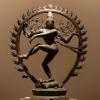
Posted
(Sorry for the repost ... too many typos!) :)
I'm struggling to understand the difference between the step and rhythm parameters.
Could anyone shed a little light on the differences, please?
I know what groove and groove quantization are ... which appears to be where the use of the rhythm parameter comes into play.
SFP Manual pg. 185: The positions provided by the figure are corrected, but, as opposed to Step, they are not rearranged by sequential order.
I always thought of groove as moving elements/ midi data to the closest 'groove point' in sequential order. The left to right order of events remains unchanged ... although any particular data point may shift left or right to reach the closest 'groove point.'
So when discussing step, the sequential distinction doesn't make sense to me.
Also, I'd like to know with both operations what part of a segment is moved.
Is it the main 'square' note of the figure that is grooved, or the first note in the segment?
Are notes in a segment also moved to a 'groove point?' In other words, does the segment itself expand or contract on the horizontal axis/ time line?
These questions are, of course, not about the graphical properties in the editor, but about the rendered midi notes.
Prado
Mi., 19.12.2012 - 21:43 Permalink
Rhythm is a conventional quantize grid that repeats according to the metric scheme (time signature).
Step is absolute positions. Symbols are taken and streamed from the Figure sequentially (left to right) and mapped to a Step position each in a round-robin fashion. Steps can also be arbitrary, without any relationship to the time signature.
Both Step and Rhythm move individual notes, which as a result does also change the shape of a segment.
Mi., 19.12.2012 - 22:46 Permalink
As always, thanks for your prompt response. I'm interpreting your comment to mean that step is essentially independent of scheme.
I'll have a play and see how I can use it know that I have a clearer understanding.
Prado
Mi., 19.12.2012 - 23:46 Permalink
Can you dechiper the two tips on the step page , page 188 ?
- What is global phrase ?
- effect of a round what is that .. i cannot translate this?
Do., 20.12.2012 - 00:35 Permalink
I think 'global phrase' means as in the global parameters where harmony and scheme reside? But I don't have SFE open at the moment to examine it.
Like in the childrens' song, 'Row, row, row your boat, gently down the stream?' Where after a few bars another part starts playing the inital melody from the beginning against the progressed melody. What is described is the same phrase in each instrument with onset of notes different for each.
Prado
Do., 20.12.2012 - 02:03 Permalink
The difference between the Rhythm and the Step Parameter is a little hard to describe.
I made a Video:
Do., 20.12.2012 - 03:29 Permalink
Now I want to see the one where you start with Step and apply it to rhythm!
Just kidding!
Thanks so much, Juergen.
I'm going to try this out with a less arbitrary rhythm ... more typical goove ... pasted to step and see what happens.
As always with Synfire, when you grasp what a parameter can do, you start immediately thinking about all the possible creative uses.
Prado
Do., 20.12.2012 - 13:20 Permalink
Hi all
Juergen, a lot of thanks to your video tutorial.This explained a great.You are a serious teacher :teach:
Please,it would be fantastic one about Variation Parameter when you got a free time,is the parameter most confusing
Thanks
Regards :thumbsup:
Janamdo,if you see the video several times and practice it with your own examples you will get the real idea of the parameters are doing
Best Wishes wat betreft :D
Do., 20.12.2012 - 16:34 Permalink
Please,it would be fantastic one about Variation Parameter when you got a free time,is the parameter most confusing
There's not much more to say about the Variation Parameter than what the manual says. It produces random variations of the figure segements of the phrase.
You can draw a vector for the variation parameter as it is shown in the appendix of the manual (page 196). The vector then produces values between 0 and 1 on the time axis and the higher the value the stronger the variation of the figure segements will be. Or you use one of the templates 'weak', 'medium' or 'strong'.
The kind of variations Synfire finally produces can not be predicted. They are random. The manual says that Synfire chooses from a pool of 25 types of variations, such as Invert, Transpose, Stretch, Compress, Smooth and Bend. But you have no direct control over what variation Synfire should choose. There is a "Random Seeds Variation" button. If you click on that, you will get a different variation and you can repeat clicking on that button until you get something useful. You can also select the templates 'weak', 'medium' or 'strong' multiple times and you will get a different result every time.
I think that most (if not all) of the 25 types variations Synfire chooses from at the Variation Parameter (Invert, Transpose, Stretch, and so on) are also accessible individually from the corresponding menus (see for example the entries at the menu "Transformation"). So, if you want to have a particular variation instead of a random one you can select the desired transformation from the menu.
Do., 20.12.2012 - 22:06 Permalink
I am sorry Juergen, but i am getting lost in this video too..it seems to be unlogical to me
Fr., 21.12.2012 - 14:00 Permalink
Hi all
Juergen,ok thanks to your explanation,is true.
yes,in the page 190 of the manual is explained:
It is not (yet) possible to exert more exact control over this process.
I think,the variation parameter, is a jewel in the rough that would improve in the next future.
It would be great to introduce new features like buffer shuffler in ableton live and the transformation options of Numerology.
Regards :D
Sa., 22.12.2012 - 15:53 Permalink
Actually whilst we're on this topic, I've got a better grasp on rhythm thanks to this post, but I'm a little confused about how the rhythm is derived if the extract from figure option is selected. Refer the pics attached, just a standard phrase and then the rhythm paramater after extract from figure has been applied. I can't figure out how those rhythm bars are related to the original figure. Bars have been placed where there arn't even notes and condensed from 5 bars into 1. I think i'm missing something simple. Cheers.
Sa., 22.12.2012 - 17:31 Permalink
I can't figure out how those rhythm bars are related to the original figure.
Rhythm is a property of the whole figure, condensed to a multiple of the length of the metric scheme. A special algorithm is used that considers periodical patterns in the figure.
If you want to extract each note position unchanged, use Step.
Sa., 22.12.2012 - 21:52 Permalink
It is for the whole phrase the extracted rhythm parameter
How it exactly works .. i will never know( it is under the hood of Synfire P/E ), but let me look to the practical application of this rhythm parameter



